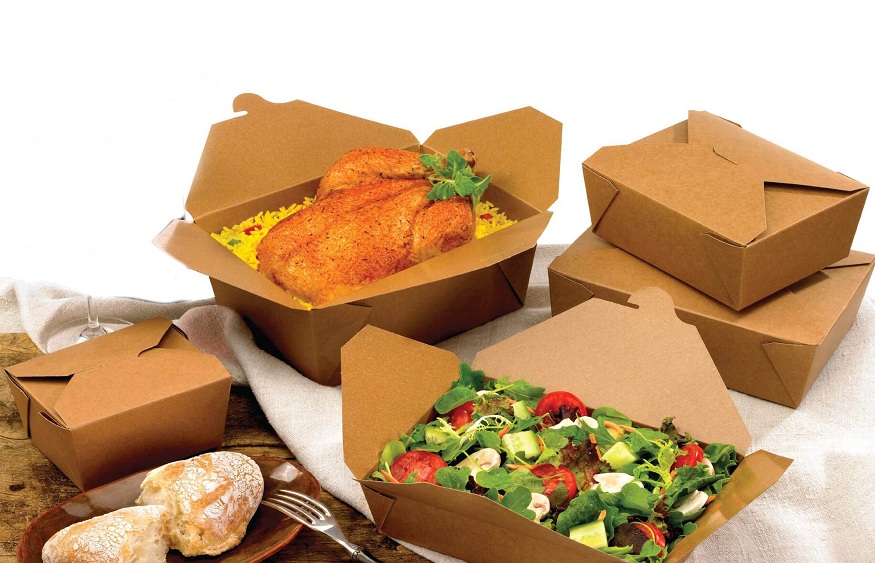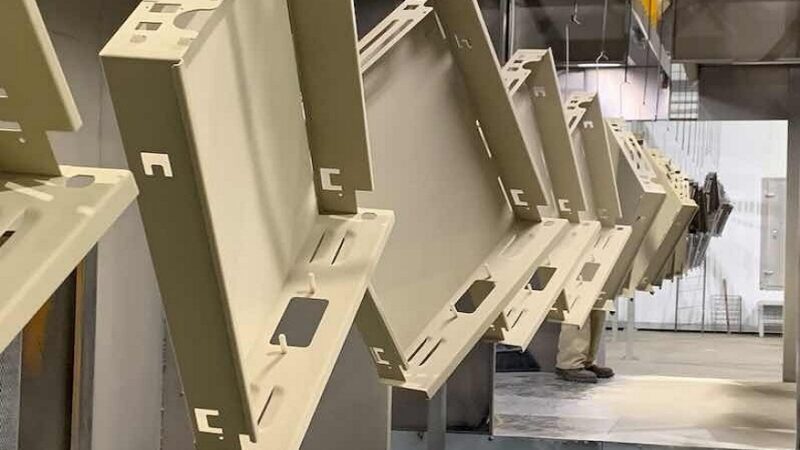Why opt for sustainable food packaging?

Sustainability and environmental issues becoming more of a priority for consumers. The food paper box have gained increasing recognition due to their eco-friendly qualities. They help reduce plastic pollution by replacing single-use plastics with eco-friendly alternatives; as more consumers take steps toward sustainable living habits in their food choices, paper food boxes have become a symbol of commitment within the food industry.
Sustainability has long been at the forefront of consumer concerns, so biodegradable and eco-friendly food packaging containers have quickly gained popularity. These containers aim to reduce environmental impact by using materials that can be recycled or composted efficiently and using single-use plastic waste less.
Versatile and Eco-Friendly
Food paper boxes (sometimes simply known as paper food boxes ) are versatile yet eco-friendly packaging solutions designed to store, transport, and serve various food items. Made from food-grade paperboard, which is both biodegradable and recyclable – making this sustainable packaging choice in the food industry. Food paper boxes come in all shapes and sizes to meet the varying needs of restaurants, fast-food chains, catering services, or delivery businesses.
These boxes are commonly used to package fast-food items, such as hamburgers, French Fries, sandwiches, pizza slices, fried chicken, and pastries. Their design typically prioritizes convenience and functionality – often featuring features like flaps, handles, or partitions that ensure food items can be securely and easily transported.
Branding and Customer loyalty
Food paper boxes play an essential function in food service environments and can add an additional element of branding and customer loyalty for any business. Many organizations customize these boxes with logos, slogans, and artwork from their brand – creating an easily recognized packaging identity that increases brand recognition and strengthens customer connections.
Food paper boxes have become an integral component of modern food packaging, providing businesses in the food service sector with a balance of functionality, sustainability, and branding benefits.
Features and choice of food packing containers
Food packaging plays an integral role in the food industry, enabling companies to safely store, transport, and preserve various food products. Available in various materials and shapes/sizes that cater to certain food items, they can also fulfill various supply chain purposes like packaging prepared meals, fresh produce, or takeout orders – they have become part of the modern culinary landscape
Food packaging container come in various materials, from plastics and metals to glass and paper-based options. Each material offers distinct advantages in terms of durability, insulation, transparency, and cost-effectiveness, depending on their intended use and environmental considerations.
Food packing containers are designed with convenience and hygiene, including secure seals, snap-on lids, or resealable closures to help keep food fresh during transport without spills or leakage. Some models even feature microwave or oven-safe features for convenient reheating or versatile usage.
Standards and Marketing efforts food packing containers
Food containers are pivotal in reducing food waste by prolonging product shelf life and preventing contamination, helping businesses that handle and distribute perishable goods adhere to food safety standards.
Food packaging containers play an essential part in branding and marketing initiatives. Customization options like printing logos, labels, and promotional messages allow businesses to establish a distinct brand identity while expanding visibility in the marketplace. Inspiring packaging may even influence consumer buying decisions.
Food packaging containers are indispensable tools in the food industry, serving multiple functions, including preservation, convenience, safety, branding, and environmental responsibility. As technology and consumer preferences advance in food production and consumption, containers will continue to play an integral role in packaging and consuming our favorite dishes.
Environmental Concerns of Eco-friendly Food Packaging
Eco-friendly food packaging represents a paradigm shift in how we view packaging solutions for food products. As society becomes more environmentally aware, there has been an increased demand for eco-friendly alternatives that don’t contribute to pollution and waste production – such as green or sustainable packaging solutions that prioritize materials that reduce harm while still successfully protecting and presenting items attractively.
Eco-friendly packaging (also referred to as sustainable packaging) seeks to meet this demand through materials and practices that minimize harmful impacts while effectively protecting and presenting food items – something traditional packaging materials cannot do – by prioritizing materials or practices that prioritize materials or practices which minimize environmental harm while still effectively protecting and presenting items while still effectively preserving and presenting items effectively while maintaining effectiveness preserving and presenting items on shelves or counter top of them all this shift occurred some years later compared with conventional food displays on shelves versus being stored and presented on shelves or counter top of shelves, or cabinets are great examples of such shift.
Global awareness
Eco-friendly food packaging addresses environmental concerns and meets consumer demands for eco-conscious products. Businesses can align this packaging with their sustainability goals while strengthening brand recognition and loyalty among their target demographic. As global awareness of environmental issues increases, eco-friendly packaging looks set to become a standard practice within the food industry – providing businesses with a win-win solution and protecting our planet simultaneously!
Key Features and Considerations of Eco-Friendly Food Packaging
Eco-friendly food packaging aims to minimize its ecological footprint throughout its entire lifecycle, including materials production, manufacturing processes, transportation, usage, and disposal/recycling.
- Biodegradability and Compostability: Eco-friendly packaging materials typically are biodegradable, meaning they break down over time into non-harmful substances that decompose naturally into non-hazardous forms, such as non-biodegradable plastics. Compostable materials take this one step further by decomposing into organic matter, which enriches soil quality while reducing landfill waste.
- Recyclability: Many eco-friendly food packaging materials can be recycled, encouraging the reuse of resources while decreasing demand for virgin materials and decreasing greenhouse gas emissions. Recycling helps conserve energy and cut back emissions significantly.
- Renewable Resources: Eco-friendly packaging materials often utilize renewable sources like plant-based plastics (PLA), bamboo, or sugarcane as opposed to non-renewable resources that deplete fossil fuel reserves and become depleted over time.
- Minimalistic Design: Sustainable packaging often features minimalist designs with less ink and additives to reduce the environmental impacts of printing and manufacturing processes.
- Waste Reducing: Eco-friendly packaging is created to eliminate excess material, providing effective protection for food products without producing more waste.
- Energy Efficiency: Producing eco-friendly packaging materials often results in lower energy usage than their more conventional alternatives.
- Local Sourcing: Reducing transportation distances for packaging materials can lower the carbon footprint associated with production.
- Consumer Education: Many eco-friendly food packaging options provide educational information on proper disposal or recycling practices, encouraging consumers to make environmentally responsible choices.
Conclusion
With increasing concern about environmental sustainability, eco-friendly food packaging has emerged as an innovative breakthrough. Packaging recycling reduces its environmental footprint and aligns with consumer values – an integral consideration for businesses seeking to thrive in an eco-conscious marketplace. Food paper boxes and packing containers remain necessary in the food industry, providing practical solutions to preserve, present, brand, and convenience issues while contributing to branding and convenience. With time, eco-friendly practices may become increasingly integrated into these solutions to achieve long-term success in business.






